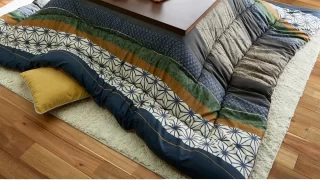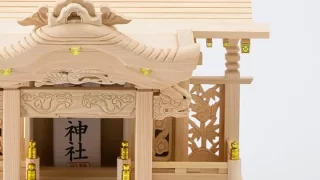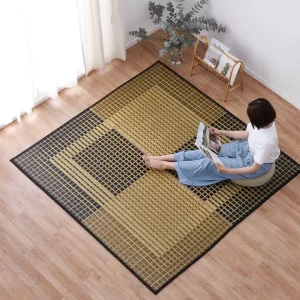What are Shingon Buddhist prayer beads?
Contents
There are prayer beads for Shingon sect
There are male beads and female beads.
The Shingon Buddhist mala has 108 main mala beads, which are the same shape for both men and women, but differ only in size.
In the Shingon sect, compared to other sects, prayer beads are especially important.
For example, the 108 main beads represent the 108 deities of the Kongo world, and the big beads represent the wisdom of Dainichi Nyorai.
The small beads (Shiten) surrounding it are the four Buddhas in four directions (Mida, Muro, Ashuku, Shaka) of the mandala that expresses the universe.
There is also an interpretation that it refers to the four bodhisattvas: Fugen Bosatsu, Kannon Bosatsu, Monju Bosatsu, and Maitreya Bosatsu.
Names and shapes of Shingon Buddhist prayer beads
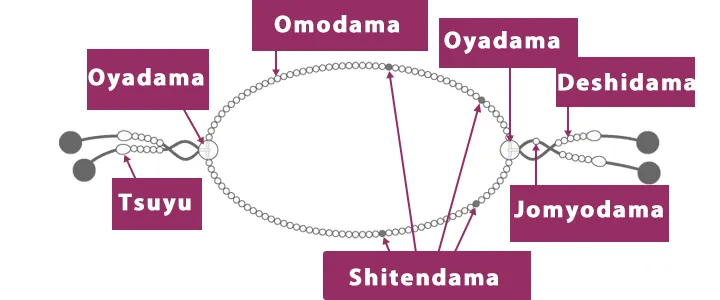
The commonly used shape of Shingon Buddhist malas is a double type consisting of 108 main beads.
108 Omodama (Main Beads) 108 pieces, Oyadama (Big Beads) 2 pieces, Shitendama (Small Beads) 4 pieces,
1 Jomyodama, 20 Deshidama, 4 Tsuyudama
Comes with 4 Bontenfusa.
There are Shitendama (small beads) at the 7th and 21st from Oyadama (big beads).
Because it is a shape that uses a long series of prayer beads doubled, it is also called furiwake prayer beads.
Oyadama (Big Bead): Represents the wisdom of Dainichi Nyorai.
Omodama (108 pieces): Refers to the 108 deities of the Kongokai.
Tengyoku refers to the four Buddhas (Mida, Muro, Ashuku, and Shakyamuni) of the mandala representing the universe, or the four bodhisattvas, Fugen Bosatsu, Kannon Bosatsu, Monju Bosatsu, and Maitreya Bosatsu.
Shitendama (small rosary): The four Buddhas in four directions (Mida, Muro, Ashuku, Shakyamuni) of the mandala representing the universe, or the four bodhisattvas Fugen Bosatsu, Kannon Bosatsu, Monju Bosatsu, and Miroku Bosatsu.
How to hold, use, and practice Shingon Buddhist prayer beads
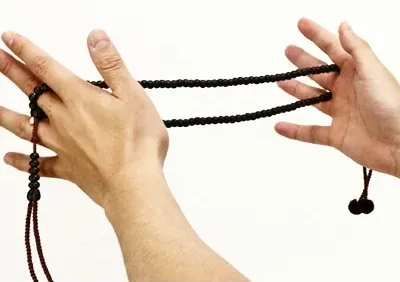

when you put your hands together
Put the prayer beads on the middle fingers of both hands and put your hands together.
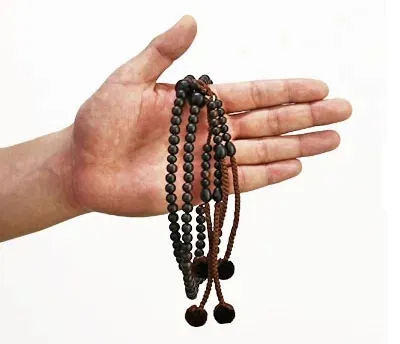

When you have prayer beads
With the Oyadama facing up, double it over your hand and hold each bunch.
In Shingon Buddhism (Esoteric Buddhism), rosaries are rubbed to make a sound.
It seems to have started long ago when the monk Toba made a sound to signal the end of the ritual.
It is said that "rubbing" the rosary is to crush the 108 worldly desires and polish the supreme state of enlightenment with pure compassion and wisdom.
It is preached in "Kongo Yuga Nenjukyo" to keep it in mind.
Material of Shingon Buddhist prayer beads
The materials used for Shingon Buddhist prayer beads include wooden prayer beads that use natural wood and prayer beads that use natural stones that have a beautiful lustrous shine.
Shingon Buddhism prayer beads made of natural wood and wooden materials
The more you use wooden materials, the more you use them, the more you can enjoy the change in the texture of the material, such as the surface of the prayer beads becoming glossy or changing to a tasteful color.
The main materials used are ebony, rosewood, boxwood, shoume, Yakusugi cedar, and bodaiju.
Fragrant wood contains sandalwood, and it is said that the scent has the effect of relaxing the mind and body.
Bodhi tree is one of the most famous wooden mala beads.
It is famous because Buddha attained enlightenment under the Bodhi tree. Therefore, Bodhi tree beads are more respected than other materials, and it is said in the scriptures that you can get "immeasurable good fortune and the greatest benefit."
There are several types of Bodhi trees, such as the Seigetsubodaiju and Tenjiku Bodhiju.
Shingon Buddhism prayer beads made from natural and precious stones
Mala beads made of natural stone material are attractive with a glossy surface and various colors of materials.
Each natural stone has its own effect and meaning, and there are many people who look for mala beads based on that meaning.
For men, tiger's eye and blue tiger's eye stones, which are famous for improving work luck and game luck, are popular materials.
For women, popular materials such as rose quartz and amethyst have feminine colors.
In addition, genuine crystal and onyx are popular among both men and women as standard materials.
Shingon Buddhist prayer beads with natural wood and stone
The materials used for the prayer beads are all natural wood, and there are also those that are all natural stones, but there are also prayer beads that contain both natural wood and natural stone.
It has the best parts of both materials, and the natural stone is accented, making it very popular.
The quality of Shingon Buddhist prayer beads
The quality of prayer beads depends on the "quality of materials", "quality of processing", and "quality of tailoring".
When these three qualities are all in place, it becomes a very wonderful malas.
"Quality of material" varies depending on the characteristics of the material, so it cannot be said that all products have the same quality. It changes depending on the uniformity of the color, the rank, rarity and beauty of the material.
"Processing quality" is through-hole processing and polishing processing.
The through hole runs straight through the center of the material, and the finished thread is hard to break, which is a sign of high quality processing.
In addition, the beads polished in Kofu, Yamanashi Prefecture, which is famous for its excellent polishing technology and beautiful polishing, have a really beautiful luster and shine unlike those processed overseas.
For "quality of tailoring", we recommend genuine Kyoto rosaries made by craftsmen recognized in Kyoto, the home of rosaries.
The beads of TokyoStore are genuine "Kyoto Rosary".
The carefulness of the tailoring, the difficulty of cutting the inner thread, and the beauty of the rosaries is completely different from those of overseas products and non-Kyoto rosaries.
Care and storage of Shingon Buddhist prayer beads
If you feel that the material of the prayer beads is dirty or the color has become dull, please use a soft cloth such as an eyeglass wipe and gently blow it.
If you have a Kikubontenbo mala, and by any chance the tuft has a habit, boil water in a pot, and when the steam comes out, apply the steam and stroke the tuft to make it round. If you take it, it will return to its original beauty.
When you carry your mala beads, we recommend that you put them in a mala bag so that the material is not damaged.
However, if you keep the beads in the bag, the tufts will tend to get peculiar.
When storing the prayer beads at home, we recommend that you put them in a special box and store them in a neatly shaped state, or hang them on a prayer beads.


